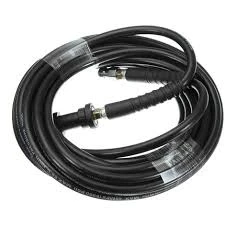hyundai santa fe power steering hose replacement
Replacing the Power Steering Hose on a Hyundai Santa Fe A Comprehensive Guide
The Hyundai Santa Fe is a popular mid-size SUV known for its reliability and comfortable ride. However, like any vehicle, it requires maintenance and occasionally part replacements to ensure optimal performance. One critical component that may need replacing over time is the power steering hose. This article will walk you through the steps necessary to replace the power steering hose on a Hyundai Santa Fe, along with some tips to make the process easier.
Understanding the Power Steering Hose
The power steering hose is an essential part of the vehicle's steering system. It carries hydraulic fluid from the power steering pump to the steering gear, allowing for easy steering. Over time, these hoses can become worn, develop leaks, or even burst, leading to difficulties in steering and potential damage to the power steering pump. Signs of a failing power steering hose include power steering fluid leaks, a whining noise when turning the steering wheel, or increased effort required to steer the vehicle.
Tools and Materials Needed
Before you begin the replacement process, gather the following tools and materials
- New power steering hose (specific to the Hyundai Santa Fe model) - Power steering fluid - Wrench set - Pliers - Screwdriver - Hose clamps (if necessary) - Drain pan - Safety goggles and gloves
Step-by-Step Replacement Process
1. Preparation Begin by parking the Hyundai Santa Fe on a level surface and turning off the engine. Allow the vehicle to cool down if it has been running. Wear safety goggles and gloves to protect yourself from any hydraulic fluid spillage.
2. Locate the Power Steering Hose Open the hood and locate the power steering hose. The pump is typically located near the front of the engine, and the hose will connect to the steering rack. Familiarize yourself with the layout to make the process smoother.
hyundai santa fe power steering hose replacement

3. Drain the Power Steering Fluid Place a drain pan underneath the steering pump to catch any fluid that may leak out during the replacement process. Use a wrench to loosen the hose clamps or fittings connecting the power steering hose to the pump and the steering gear. Once loosened, carefully disconnect the hose and allow any remaining fluid to drain into the pan.
4. Remove the Old Hose After draining the fluid, assess the old hose for any attached clamps or brackets. Remove these using pliers and set them aside. Once everything is disconnected, you can completely remove the old hose from the vehicle.
5. Install the New Hose Take your new power steering hose and position it in the same routing as the old one. Connect one end of the hose to the power steering pump and the other end to the steering gear. Make sure to tighten the fittings securely without overtightening, as this can damage the hose.
6. Reattach Clamps and Brackets If your old installation had clamps or brackets that held the hose in place, reattach them now to ensure proper routing and stability of the new hose.
7. Refill Power Steering Fluid After the new hose is securely in place, refill the power steering reservoir with fresh power steering fluid. Consult the owner’s manual for the appropriate fluid type and capacity.
8. Check for Leaks Start the engine and turn the steering wheel from lock to lock, which will help circulate the new fluid and eliminate air pockets. Carefully check the hose and connections for any signs of leaks. If everything is secure, you are good to go!
9. Dispose of Old Fluid Finally, make sure to dispose of the old power steering fluid and hose responsibly. Many automotive shops accept used fluids for recycling.
Conclusion
Replacing the power steering hose on your Hyundai Santa Fe can be a straightforward task if you are equipped with the right tools and knowledge. Regular maintenance of the steering system helps ensure a safe and enjoyable driving experience. If you feel uncertain about any step in the process, don’t hesitate to consult a professional mechanic for assistance. With the right care, your Santa Fe will continue to perform at its best for years to come.
-
Ultimate Spiral Protection for Hoses & CablesNewsJun.26,2025
-
The Ultimate Quick-Connect Solutions for Every NeedNewsJun.26,2025
-
SAE J1401 Brake Hose: Reliable Choice for Safe BrakingNewsJun.26,2025
-
Reliable J2064 A/C Hoses for Real-World Cooling NeedsNewsJun.26,2025
-
Heavy-Duty Sewer Jetting Hoses Built to LastNewsJun.26,2025
-
Fix Power Steering Tube Leaks Fast – Durable & Affordable SolutionNewsJun.26,2025

